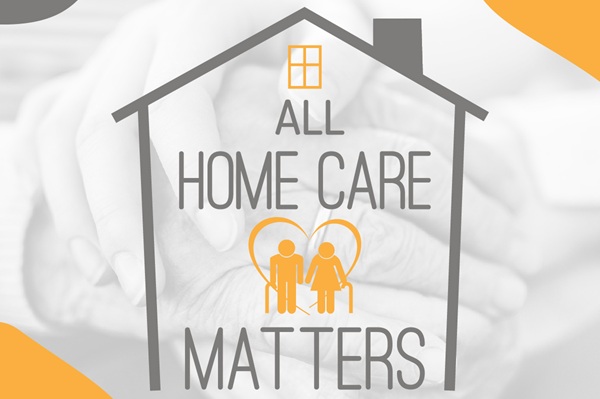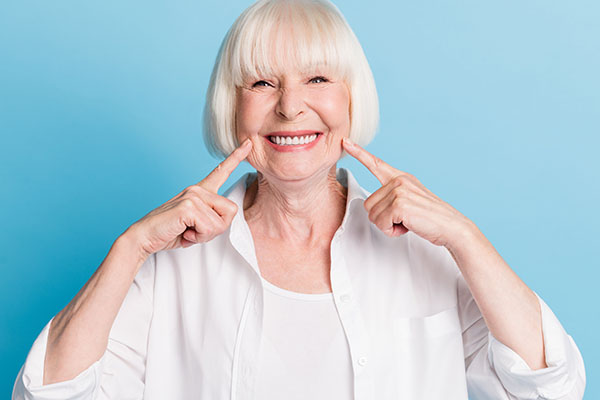When the Dentistry is so Good, Caregivers Cannot Tell Their Loved Ones’ Smiles Are Not Real

How many times a day do we look at someone’s smile on tv, in a magazine, or online, and wonder if they had any dental work done? I have done it so often that my husband does it now too! He’ll state that there is absolutely no way those perfectly white straight teeth came in that way let alone stayed that way. And I usually have to agree. Aesthetic dentistry definitely runs the gamet. Remember those six chicklets that Chandler from Friends got on the cover of People? Those were easy to tell they were veneers. Full smile makeovers, however, where all teeth are restored to be in unison for aesthetics and function, are sometimes more difficult to “diagnose”. And we are in the dental field! What about those who are not?
My first at home patient who was not my gram was an 89 year old stroke victim.
Her granddaughter called me after seeing my grandmother after church. “She told me you make house calls,” was the very first thing she said to me.
“My grandma had a stroke two years ago leaving her unable to communicate with us. She was very fussy about her looks and her smile, so we have been brushing her teeth twice daily, but we recently noticed that she has bad breath, and we don’t know why. Can you come out to see her?”
When I got there, her entire family surrounded the bed around the patient and myself.
She did open when I asked her to, and I began my comprehensive exam: I lifted up her upper lip and saw that she had an upper complete denture. I then lowered her lower lip and saw the same thing. When I explained this to the family, they didn’t believe me until I removed both dentures out of her mouth.
The odor was powerfully overwhelming. Some of the family members ran out of the room. The patient’s daughter and granddaughter, however, were shocked and fascinated at the same time. They had no idea the matriarch of their family was completely edentulous. Granted, these dentures were extremely well made, and were very, very natural looking. But, how is it that the doctors, nurses, CNA’s, etc., at the hospital did not know, let alone the home health agency employees who took care of this woman? They were never trained to do what we do. We don’t know what we don’t know.
Another similar case occurred at an affluent memory care community. Once again, I was called in because the caregivers had been brushing a new resident’s teeth twice daily but they couldn’t seem to get rid of her bad breath. Having been to this home before, I had educated the certified nursing assistants to check for dry mouth, so the guardian (the husband relocated and could not be reached) had brought an OTC dry mouth mouthwash they were trying to have this woman use, but it was inconsistent at best. Lifting up the lip showed me that she had an all-on-four implant-retained removable UPD and, dropping her lower lip, a 2 implant-retained removable LPD. Both were a force to be reckoned with in removing from her mouth. Once the prostheses and mouth were cleaned, I was able to educate on what type of dentures these were, as well as how to insert and remove daily. This woman, now suffering from dementia, had beautiful dentistry in her mouth, and both appliances were made to look real, natural. Fortunately the only issue this patient had was thrush, but, for both of these cases, their situations could have been much worse.
One of the problems I notice when I am new to any type of long term care community — assisted living; skilled nursing; memory care — is the interchanging of dental terms. For example, bridge for denture. Now, we know the difference, but when a caregiver sees something kinda large dropping from their resident’s mouth, the first response is wanting to put it back in immediately, assuming it is a denture. This happened recently to a new CNA at one of my homes. “I didn’t want to get into trouble, so I tried to push it back up but it wouldn’t stay,” Trish told me, “so I bit my lip and brought it over to my floor nurse.” That nurse took a picture of it and sent it to me. It was a stunning roundhouse bridge — with three broken teeth in it.
In a 2010 New York Times article entitled, “When a Smile is Too Perfect,” the journalist writes about a new trend of dentistry where, “dental patients are pursuing perfectly imperfect teeth.” One woman in the article told her dentist, “I don’t want my teeth to look like somebody else’s teeth in my mouth. I want them to look like I’ve had them all my life…. [I] want a subtle forgery that looks inconspicuously better than the real thing.”
Those that had sought out dentistry with “perfect imperfections” are now, on average, eleven years older from when this article was written, and this type of dentistry was not a passing fad. If anything, the “discreet look” has become even more fine-tuned with the advancement of materials such as anterior zirconia and scanned images vs mixed impressions.
So where do we go from here? More education and more training on oral health needs to be a priority for caregivers, CNA’s, nurses, nurse practitioners, physician assistants, physicians. And more often. The alternative is aspirating an unhinged Maryland Bridge in someone’s sleep that had been shoved back into a resident’s mouth in fear of having done something wrong. Or choking during dinner from a six-unit lower anterior bridge that had been put back in with denture adhesive. (True stories.) Both of these residents made it, but both cases were totally avoidable.
Those of us who work in dental offices can have a part to play in educating our patients who are caregivers. There are more out there than one would think.
Every five years The National Alliance for Caregiving (NAC) and AARP puts together a report on their trended research series, Caregiving in the U.S. The 2020 update revealed an increase in the number of family caregivers in the United States of 9.5 million from 2015 to 2020 (53 million people). Family caregivers now encompass more than one in five Americans. The study also reveals that family caregivers are in worse overall health compared to five years ago. The fastest growing age group in America? Our super seniors, those that are 85 and older. The growth of the U.S. population age 65 and older exceeds that of the total population and the population under age 65.
Only 4.5 percent (about 1.5 million) of older adults live in nursing homes and 2 percent (1 million) in assisted living facilities. The majority of older adults (93.5 percent, or 33.4 million) live in the community. This means we will be meeting people who are of the “sandwich generation” — a group of Americans who are caring for children under 18 and older relatives at the same time. 12% of parents are part of the sandwich generation, according to data from the Pew Research Center. Sandwich generation parents who are between 18 and 44 are spending about three hours per day on caretaking, compared with similar parents over 45, who do closer to two hours per day. This difference is likely because the younger parents also have young children.
As dental care professionals, it falls on us to have a conversation with our patients who have older family members either living with them or in a home. Offer to explain the difference between a denture and a bridge. Ask if their loved ones suffer from dry mouth. Taking the time to show that we care for others not just sitting in our operatories not only will go a long way when it comes to patient loyalty, but also helps make us feel good as well.
Have questions about “easy chair dentistry”? Never hesitate to contact me at: [email protected] and/or take a look at my website: https://joyposkozimdds.com/ for more resources.
Related Posts
Lance is a writer, author, and Healthcare professional with over 20 years in the healthcare industry.Lance A. Slatton is the host of the Award-Winning podcast & YouTube show All Home Care Matters. He is also a senior case manager at Enriched Life Home Care Services in Livonia, MI. Lance was also named a 50 under…
The process of adjusting to new dentures takes several weeks. During this time, you may experience some discomfort and self-consciousness. Both partial and complete dentures take some getting used to. Your dentist gives you instructions for denture adjustment, and if you follow them closely, the process should be simple. However, it does require patience as…
Most first-time denture candidates are nervous about adjusting to new dentures. They usually do not know what to expect, and they may wonder if dentures will feel natural.People get dentures for many reasons, such as broken or missing teeth, excessive tooth decay, gum disease, severe tooth pain or trauma, and painful sensitivity to hot and…
In addition to recognizing the new person in the mirror, adjusting to new dentures requires changing some of a person’s former eating habits. Having a full set of great-looking teeth can give one’s confidence a significant boost, but after spending a considerable amount of time without teeth, it can take a little while to learn…



